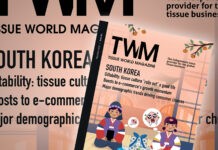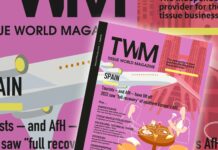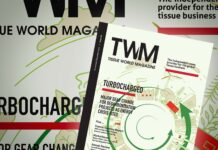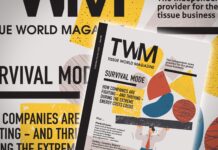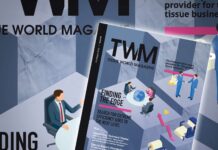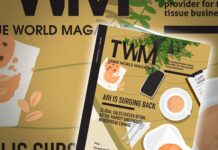I don’t know if Guillermo Swett, chief executive of Chilean producer FPC Tissue, has any Italian ancestry, but he reminds me of some good Italian friends of mine – the ones who love to say, when some issue or other crops up: “It’s no problem… it’s no problem.”
We are well into our interview at the impressive FPC Tissue plant on the coast of Chile and by now I’m used to his enthusiasm expressed in excellent English.
He is explaining his ambitious business plan – which is no less than to take on the mighty American market with a premium product its consumers don’t yet know they need.
That’s when he reminds me of my Italian friends.
Top-of-the-range technology will be needed to achieve that. He doesn’t actually say the words, but it won’t be a problem as he’s just about to start up only the second Advantage NTT 200 line in the world to achieve the premium quality he seeks.
And then, without blinking, he mentions that this area is “prone to earthquakes”.
That, too, has been taken into account as they have built very strong buildings with deep foundations, and as with much of the organisation and efficiency TWM sees in day-to-day Chilean life, they’ve done it in record time.
Concepción in particular – where FPC Tissue is based – and also Chile’s capital Santiago where SCE Chile (who TWM also visited for this issue) were both severely hit by 2010’s 8.8 magnitude earthquake. Yet Chileans have typically created and embraced an iconic drink out of the tragic earthquakes the country has suffered – Terremoto which means earthquake and is made of fortified wine (I liked the use of the word fortified especially after talking to Mr Swett), a couple of dollops of pineapple ice cream and Fernet… travelling around the country in 2015, TWM sees the locals drinking Terremoto on many occasions.
And it’s this desire for eating and drinking-out that has led to a boom in the country’s restaurant scene and helped make it a regional leader, both economically and increasingly in terms of its tissue sector. A developing middle class, efficiency and increasingly disposable income have meant tissue consumption is regular and stable. Retail tissue is well developed, at per capita consumption of 8.1kg in 2014 (this is only slightly below regional average in Western Europe) while the AfH market recorded close to 8% growth in volume in 2014. CMPC and SCA dominate the market and when combined make Chile the fifth largest producer in Latin America, behind the likes of powerhouses Brazil and Mexico.
Every problem is an opportunity.
Tissue World São Paulo!
As this issue kicks off with coverage of the talks from Tissue World Barcelona, TWM would like to offer a warm welcome to all those attending Tissue World São Paulo in May.
We remain dedicated to bringing your business the best local knowledge from the most dynamic tissue markets around the world. Brazil is one of them, so what next for this fast growing giant and its tissue market?
Be in at the start of Tissue World’s Latin venture. Help us to share vital business topics tailored to the region’s local dynamics, and to do business on a tradeshow floor full of local and regional exhibitors.


























